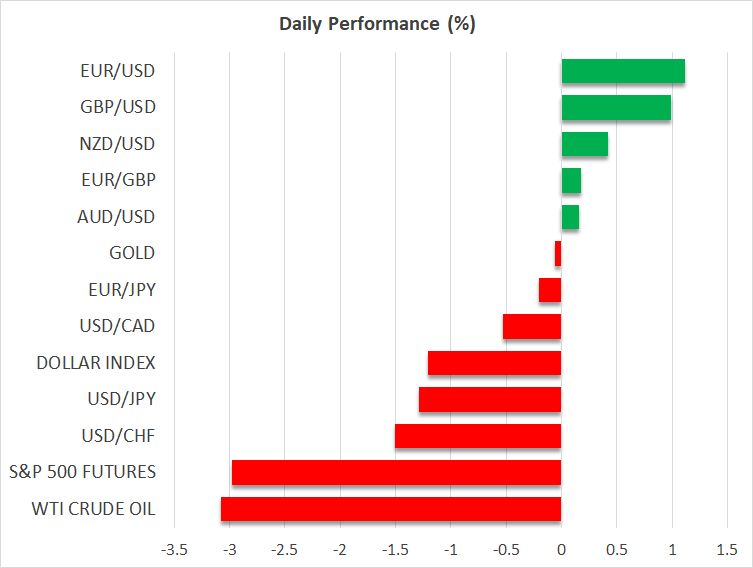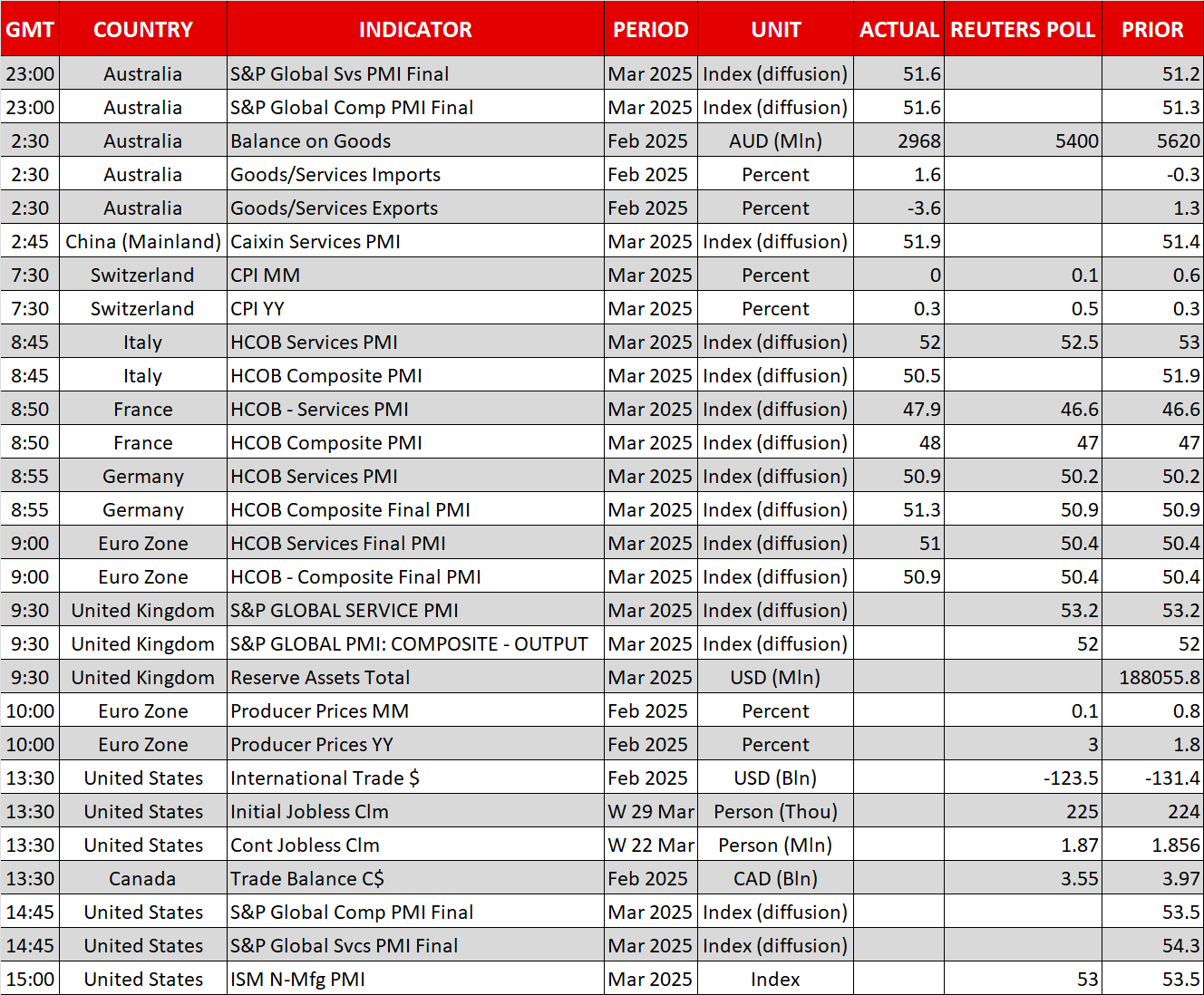- Tariff-pause headlines slow down Wall Street’s bloodbath
- White House denies the reports, Trump threatens China
- Safe havens pull back on negotiation hopes, but still near their highs
- Oil tumbles on recession fears, OPEC’s output decision
Trump Denies Tariff Pause Headlines, Threatens China
Financial markets swung between losses and gains on Monday as investors had to digest conflicting headlines related to Trump’s tariff strategy.
Wall Street opened the week with a negative gap reflecting the mounting recession fears in the wake of a Trade War 2.0 between the US and its trading partners. Last Wednesday, on so-called ‘Liberation Day’, US President Trump announced a 10% baseline tariff on all imports to the US, along with higher duties on some of the nation’s biggest trading partners. The 10% baseline duties went into effect on April 5, while the higher reciprocal rates are scheduled for tomorrow, April 9.
While headlines hit the wires that Trump is considering a 90-day pause in tariffs for all countries except China, allowing a bounce on Wall Street, the relief did not last long as the White House was quick to deny the reports. Later in the day, Trump threatened that he will add another 50% duty on Chinese imports tomorrow if the world’s second-largest economy does not withdraw its 34% retaliatory tariffs announced last week.
Investors Turn Hopeful About Tariff Negotiations
The European Union was also quick to respond on Monday by proposing higher tariffs, against which Trump also threatened to fight back. However, European Commission President Ursula von der Leyen said that the EU remains willing to sit at the negotiation table with the US administration. Even Elon Musk called for zero tariffs between the EU and the US over the weekend.
Having said all that, and following a volatile session, the Dow Jones closed nearly 1% below its opening. The S&P 500 also saw marginal losses, while the Nasdaq ended the session fractionally positive. The futures market, however, is pointing to a stronger rebound today, perhaps as investors became more hopeful that talks between the US and some of its close allies could begin soon.
In an interview with Fox News, Treasury Secretary Scott Bessent said that “maybe almost 70” nations, including Japan, have contacted the US government asking for negotiations.
The benchmark 10-year Treasury yield climbed above the 4% level yesterday, while Fed fund futures are now pointing to around 95bps worth of Fed rate cuts this year. This is one fewer quarter-point reduction than the 120bps penciled in on Monday morning and could explain the US dollar’s recovery throughout the day.
Both the yen and the franc, which wore their safe-haven suits following Trump’s aggressive tariff announcements last week, pulled back. Nonetheless, they are back up today, with the dollar retreating, which suggests that recession worries remain elevated.
Fed Not in a Rush to Lower Rates, Oil Collapses
Fed officials, on the other hand, do not appear similarly concerned, with Fed Chair Powell saying on Friday that this is not the moment for a “Fed put”, and Chicago Fed President Austan Goolsbee noting yesterday that while businesses are anxious about tariffs, the Fed would need to look at “hard data” in its policy response. With that in mind, Thursday’s inflation numbers could well impact investors’ view about the Fed’s future course of action, especially if there is an upside surprise, as this would add credence to the notion that the Fed won't be rushing to cut interest rates.
Oil prices have been also reflecting recession fears, tumbling to levels last seen back in April 2021. Tit-for-tat tariffs could weigh severely on demand for crude oil, but tariffs are not the sole driver for the black liquid. OPEC and its allies – the OPEC+ group – unexpectedly announced plans to speed up output hikes, adding pressure through the supply side of the equation.
